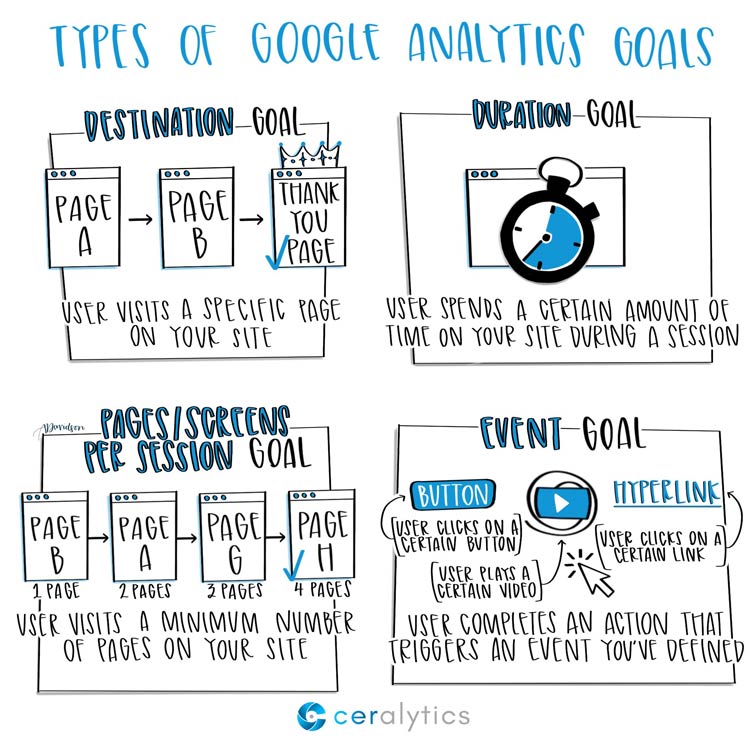What Data Is Google Analytics Goals Unable to Track: Learn the Limitations
What Data Is Google Analytics Goals Unable to Track: Learn the Limitations
Blog Article
Introducing the Blind Spots: Understanding What Google Analytics Goals Can not Measure
In the realm of digital analytics, Google Analytics stands as an effective device for monitoring and assessing on-line user communications. In the middle of its robust capabilities, there exist blind spots that often avert measurement. what data is google analytics goals unable to track. Comprehending what Google Analytics objectives can not gauge is vital for gaining an extensive sight of individual behavior and interaction. As we dig right into the complexities of these dead spots, we reveal a complex internet of uncharted territories that hold useful understandings right into user activities and motivations, difficult conventional wisdom and clarifying the constraints of our data-driven understanding.
Customer Habits on External Operatings Systems
Comprehending how customers engage on external systems is vital for enhancing online methods. Outside systems, such as social networks networks, recommendation web sites, and on-line forums, play a substantial role in driving traffic to a company's internet site. By analyzing customer behavior on these platforms, companies can gain beneficial insights right into the performance of their advertising efforts and the preferences of their target market.
One key aspect of customer habits on outside platforms is the referral resource. By tracking where the customers are originating from, businesses can determine which platforms are driving the most traffic to their website. This information can aid business allot their sources better, focusing on the systems that produce the very best outcomes.

Offline Communications and conversions
Examining individual habits on outside platforms offers valuable understandings right into on-line methods; however, thinking about offline conversions and communications is just as essential for a thorough understanding of a company's general efficiency. While Google Analytics succeeds at tracking on-line interactions, it drops short in catching the total consumer journey that typically consists of offline touchpoints. Offline conversions, such as in-store acquisitions or phone inquiries, play a considerable function in lots of companies' success. Overlooking these interactions can lead to an altered view of the performance of marketing campaigns and overall company performance.

Attribution Beyond Last Click
When diving into the world of digital advertising analytics, it comes to be important to look beyond the single touchpoint of the last click for an extra thorough understanding of acknowledgment. While Google Analytics provides valuable insights click this right into individual habits, counting solely on last-click acknowledgment can be limiting - what data is google analytics goals unable to track. Attribution designs that go beyond the last click use a much more nuanced view of the consumer trip, taking into account all the touchpoints that bring about a conversion
Attribution beyond the last click allows marketing professionals to appoint debt to numerous interactions along the conversion course, giving a more clear image of the efficiency of different advertising and marketing channels. By discovering multi-touch attribution models such as direct, time degeneration, or position-based acknowledgment, companies can much better assign their advertising and marketing spending plans and optimize their methods for optimal impact.
Recognizing the influence of each touchpoint in the conversion process is vital for making informed decisions and maximizing ROI. By accepting acknowledgment past the last click, services can acquire deeper understandings right into client behavior and tailor their advertising efforts much more properly.
Cross-Device and Cross-Browser Tracking

Similarly, cross-browser monitoring matches cross-device monitoring by catching customer actions as they switch between various web internet browsers. Understanding exactly how customers communicate with websites on numerous internet browsers click over here now can help marketers optimize their online experiences to make certain uniformity and capability across different platforms.
Qualitative Information and User Intent
Recognizing user intent with qualitative data analysis is important for establishing targeted electronic advertising and marketing strategies that reverberate with the needs and preferences of the target audience. Qualitative data provides understandings into the 'why' behind customer activities, clarifying inspirations, emotions, and choices that quantitative data alone can not catch. By analyzing user responses, comments, and communications, online marketers can discover valuable information about individual intent, permitting them to tailor their messaging, material, and offerings to better align with what their audience is seeking.
Qualitative information also aids in understanding the context in which individuals engage with a web site or app. This contextual understanding allows online marketers to develop more tailored and relevant experiences, inevitably driving greater engagement and conversion rates. By diving into customer intent through qualitative information evaluation, companies can obtain a deeper understanding of their target market, leading to more effective advertising and marketing strategies that fulfill customers' expectations and needs.
Verdict
In conclusion, Google Analytics goals have restrictions in measuring individual actions on external platforms, offline conversions, attribution beyond last click, cross-device and cross-browser monitoring, and qualitative data connected to user intent. what data is google analytics goals unable to track. It is essential for companies to be conscious of these blind areas in order to supplement their information analysis with other tools and approaches to gain an extra thorough understanding of their target market and improve their total digital advertising strategies
By analyzing individual actions on these platforms, organizations can get useful understandings right into the efficiency of their marketing initiatives and the preferences of their target audience.
Examining individual behavior on external systems provides beneficial understandings into on the internet strategies; however, thinking about offline conversions and communications is similarly necessary for a detailed understanding of a business's overall efficiency.In electronic advertising analytics, relocating past last-click acknowledgment to discover cross-device and cross-browser tracking is crucial for getting a holistic understanding of individual communications across various systems and devices. By evaluating user responses, remarks, and interactions, marketing professionals can reveal useful info about customer intent, allowing them to tailor their messaging, content, and offerings to better align with what their target market is looking for.
By delving right into customer intent with qualitative information analysis, organizations can get a deeper understanding of their target audience, leading to much more efficient marketing look at this now approaches that satisfy users' demands and expectations.
Report this page